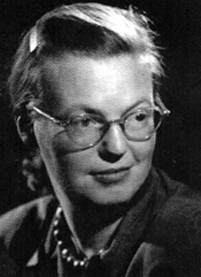There are some writers who you
read about, and whose work is recommended over and over again, yet when you
look for their books they are either unavailable or hellishly expensive. Robert Aickman is one author who comes to mind
in this regard (though thankfully his work is slowly being reprinted) and the
other is Shirley Jackson. I've been trying to get a copy of her novels for
quite some time and was really pleased to see a couple of titles finally arrive
at my library last month and, on checking
out Fishpond, I was able to pick up a few at a reasonable price.
My first read was We Have Always Lived in the Castle and I
thought this was a delightful tongue in cheek study of madness and control. The
story centres on the Blackwood sisters who live in their family mansion on the
outskirts of a small village. It is well
known that the entire Blackwood family were poisoned during a family dinner, with
Constance Blackwood being arrested for their murder. Constance
was released though, without charge, and she returned home to take care of her
younger sister Merricat and their infirm Uncle Julian.
 |
| Shirley Jackson |
The two sisters have a regular
routine of housework, shopping and cooking, and this routine is very important
to Merricat. So, when a cousin drops in
unexpectedly to stay for a while and threatens to upset their daily rituals (and
Merricat’s hold on her sister) she takes extreme measures to get rid of him.
Whilst reading this novel I was
thinking of the phrase ‘fat girls and feeders’ - Merricat isn't fat but Constance is definitely a feeder, and food is a major
theme for the novel. In fact, the ending
is almost fairy-tale like with the villagers paying homage to the girls with
food. I really enjoyed reading this one.
 The Haunting of Hill House is what I guess you would call a traditional
haunted house story, and I found Eleanor the central character quite
interesting and someone I could identify with (she’s a chronic daydreamer and
so am I). Eleanor has been invited to
take part in a study of the supposed supernatural happenings at Hill House and was chosen due to her experience with poltergeist activity when she was younger.
The Haunting of Hill House is what I guess you would call a traditional
haunted house story, and I found Eleanor the central character quite
interesting and someone I could identify with (she’s a chronic daydreamer and
so am I). Eleanor has been invited to
take part in a study of the supposed supernatural happenings at Hill House and was chosen due to her experience with poltergeist activity when she was younger.
I remember that the original
movie really frightened me, however when reading the novel you are a good half
way into it before things really start to happen but Jackson shows quite an art
in stealthily unsettling your nerves. My
favourite scene has Eleanor clutching her friend Theodora’s hand whilst she
sleeps. It is pitch dark in the bedroom
that they are sharing and there are babbling noises and shrieks coming from the
adjoining room. As things reach a climax
Theodora sits up suddenly to see what is going on at which point Eleanor leaps
out of bed asking in terror whose hand had she just been holding because it obviously
hadn’t been Theodora’s – reading this just prior to going to sleep was a real
goose-bump moment for me! I didn’t enjoy
this one as much as We Have Always Lived
in the Castle, but it is still definitely worth reading, especially for the
opening paragraph which you will find yourself reading several times over (the
same paragraph also closes the novel).
The Lottery and Other Stories is a different sort of read again. This selection of short stories are unusual to
say the least and I must confess that some of them I just didn't ‘get’. The main problem I had with the collection was
that most of the stories just didn't mean anything, or they didn’t have any
sort of ending. Many of the character’s
are known by their title and surname only (ie Mr White, Mrs Straw) and I found
this made it a little hard to read with the characters seemingly faceless and
impersonal.
The funniest story in this collection is My Life with R H Macy, and
I actually laughed out loud at the ending. It was brilliantly done.
You do notice that order and
obsession are the primary themes in Jackson ’s
writing. Some people have made the
comment that these stories are an extension of her neuroses, and she does seem
to be quite an enigmatic character who had a few problems, but she is definitely
a writer whose work I would like to explore more.
For further reading on Shirley Jackson visit: http://shirleyjackson.org/
Maxine

No comments:
Post a Comment